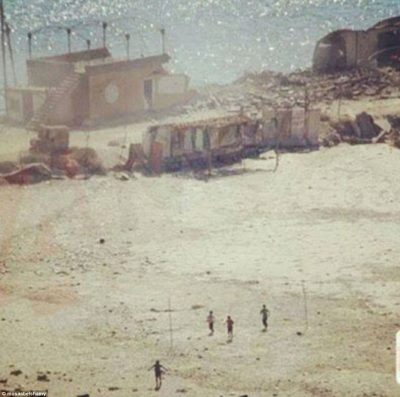Remembering Israel’s Killing of Four Children on the Beach in Gaza
On 16 July 2014, Israeli missile killed four children of the same family on a beach in Gaza

What: Israeli missile kills four children of the same family on a beach in Gaza
When: 16 July, 2014
Where: The Gaza Strip, occupied Palestine
What happened?
Israel’s military offensive on the Gaza Strip in 2014 — “Operation Strong Cliff” from 8 July until 26 August — was one its deadliest ever against the Palestinians besieged in the coastal strip of land. Aside from the destruction of the civilian infrastructure and its disproportionate use of air strikes, among the war crimes that Israel committed during this offensive was its often deliberate targeting of civilian areas. This was arguably the most shocking crime of all.
On the afternoon of 16 July, four children belonging to Bakr family ventured onto the beachfront at Gaza City’s small harbour, playing near the boats that their fathers used as fishermen to earn a living. During the offensive, Israel banned all Palestinian fishermen from going out in their boats and essentially closed the port.
As the four cousins – 11-year-old Mohammad Ramiz Bakr, 9-year-old Ismail Mahmoud Bakr, and Ahed Atef Bakr and Zakariya Ahed Bakr, both aged 10 – continued to play with other children from their family, Israeli forces shelled the area and the fishing boats. One of the boys was killed immediately. The other three children started running from the beach when a second shell killed them too.
Three other members of the Bakr family were severely injured in the attack: 13-year-old Hamad Bakr was hit by shrapnel in the chest; 11-year-old Motasem Bakr was injured in his head and legs; and 21-year-old Mohammad Abu Watfah’s stomach was pierced by shrapnel.
A photographer for the New York Times, Tyler Hicks, witnessed the second strike after he heard “a loud, close blast.” He then heard the second blast while grabbing his equipment, later recalling that “I saw that boy running, and by the time I had reacted he was already dead. That’s the image that will stay with me.”
What happened next?
Following the killing of the four boys, the Israeli military admitted that it had conducted the strike and called it, dismissively, “a tragic outcome,” claiming that it mistook the children for Hamas militants. International outrage followed and Israel launched its own internal investigation into the killings, which was completed almost a year later in June 2015.
The resulting report essentially exonerated Israel from any responsibility:
“The incident took place in an area that had long been known as a compound belonging to Hamas’s Naval Police and Naval Force (including naval commandos), and which was utilised exclusively by militants.” This compound, said the statement, “spans the length of the breakwater of the Gaza City seashore, closed off by a fence and clearly separated from the beach serving the civilian population.”
This was what the Israel military claimed, even though the hut around which the children were playing was in the clear sight of nearby hotels where international journalists were staying. All of them reported that they saw no militants in that area at the time of the strike.
The Israeli military statement continued, saying that it had “carried out a number of attacks on the compound in the days prior to the incident” and, in one attack the day before, “a container located inside the compound, which was used to store military supplies, was attacked.”
This, again, contradicts the accounts of many of the journalists who were there. The compound in question, they confirmed, was easily accessible to both fishermen and local Palestinians who visit the beach to swim and relax, therefore making it a poor location for Hamas to store its military supplies. Furthermore, the container which the Israeli report described was found to have contained no military equipment when investigated.
In August 2018, it was revealed by The Intercept that a secret report by the Israeli military police said that the strikes were conducted without authorisation. According to the leaked report, the Israeli drone operators confessed that they contacted their superiors after they killed the first child, seeking authorisation for the second strike and clarification on what to do about the fleeing children who they allegedly mistook for militants. The report states, however, that “less than a minute later, the drone operators decided to launch a second missile, killing three more children, despite never getting an answer to their question.”
The killing of the Bakr boys was, as far as many people are concerned, evidence that Israel was targeting civilians and civilian areas indiscriminately in the numerous air attacks that it has conducted on the Gaza Strip. It symbolised the killing of innocents by the Israeli military, children being regarded as blameless and easily distinguishable from Hamas fighters, and not connected at all to the politics in the name of which civilians are all too often crushed.
Barely three years later, Israel detained the Bakr family fishermen, while at least 1,500 homes destroyed in that same 2014 offensive still need to be rebuilt.
Six years later, justice for the Bakr family has yet to be seen. Israel’s “investigation” of its own war crime has made sure of that.
*
Note to readers: please click the share buttons above or below. Forward this article to your email lists. Crosspost on your blog site, internet forums. etc.
Featured image is from Pinterest

